Nanga Parbat – The Killer Mountain
Pakistan is full of great, high-rising mountains with beautiful ridges and valleys. Once you visit this country, you’ll be in love with the mountains and want to return for more. Let’s talk about one of these exotic mountains, the Nanga Parbat, which doesn’t need any introduction as its name is enough to explain its glory.
Nanga Parbat, the ninth-highest mountain in the world, is located in the Gilgit-Baltistan region of Pakistan. Nanga Parbat has a long and unique history. The name comes from the local language and means “Naked Mountain.” The mountain is also known as Diamir, which means “king of Mountains.”
That is the second-highest mountain after k2 in Pakistan and is the western anchor of the Himalayas. Nanga Parbat rises directly from the Indus valley and is separated from the Karakorum range by the massive Indus river.
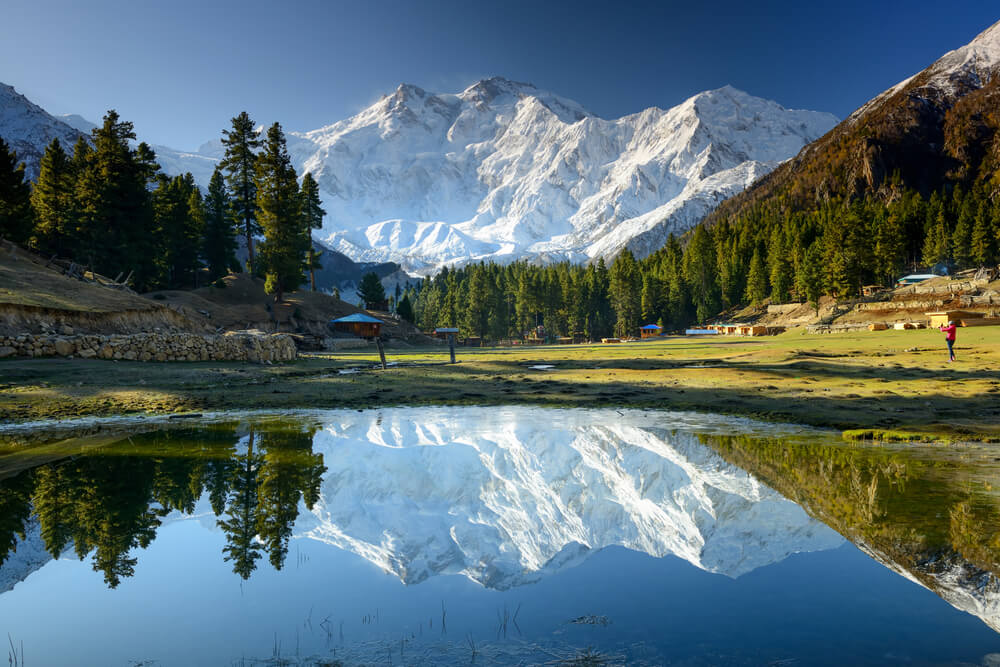
The mountain has several faces, the most notable being the Rupal face, 4,600 meters high and one of the world’s giant mountain faces. It is a rugged mountain to climb and has been the scene of many tragedies.
Despite all these tragedies, the mountain has been climbed by many famous mountaineers, including Herrligkoffer. If you plan to mount it, pack your bags with all the necessary equipment, including clothes, food, and camping gear.
Let’s take a look at how to explore this beautiful mountain.
Nanga Parbat History
Nanga Parbat has quite a colorful history with many interesting facts and figures. It is also known as Diamir (the local name), which means “king of mountains.”
If we look back at its history, Nanga Parbat was once considered a German mountain. However, compared to the other Himalayan peaks that started to be explored in the 19th century, Nanga Parbat tasted the climbing blood way earlier.
Albert Mummery, a great Alpine climber, was the first person who attempted to climb this mighty peak, but unfortunately, he and his two porters lost their lives at this killer peak in 1895.
It was in the 1950s that the first successful ascent was made by Hermann Buhl, also known as the first person to climb Nanga Parbat.
Since then, many mountaineers have attempted to climb Nanga Parbat, but it is still considered one of the world’s most challenging and dangerous climbs.
Nanga Parbat Weather
Nanga Parbat has a subarctic climate and can be extremely cold, even in summer. Therefore, the best time to climb is from June to August, when the weather is most stable.
However, even during these months, there can be sudden storms that can make conditions very dangerous.
The average maximum temperature in these months can range between 13 degrees to 17 degrees. However, the temperature can drop at night to as low as 4 degrees.
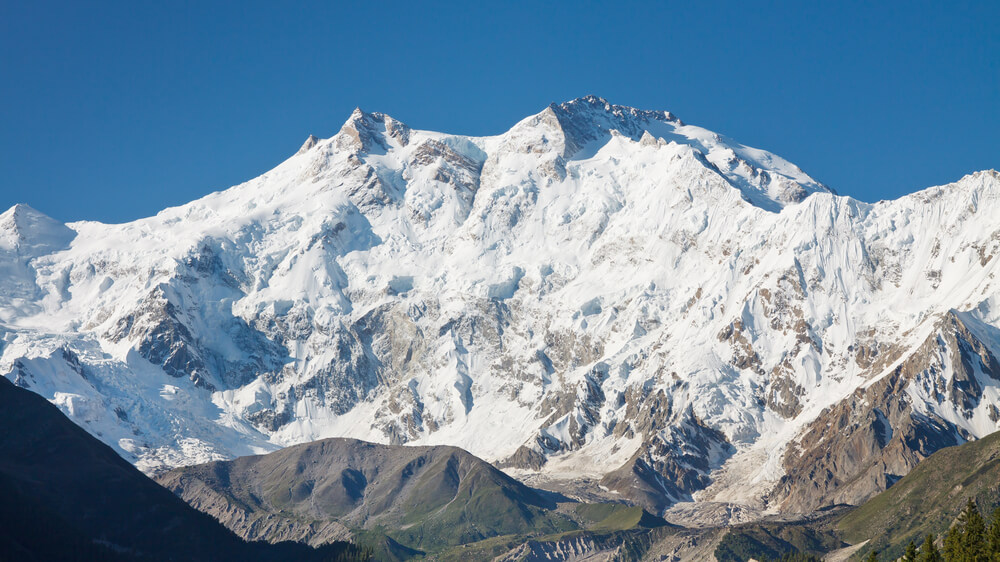
In winter months, the weather is so freezing that you can’t even imagine it. The maximum temperature is -7 degrees during December and January, and the nights are even colder, ranging from -17 to -15 degrees.
When planning a vacation in the area, you must expect the mean temperatures and be prepared for the weather. Also, be sure to pack according to the season you are visiting.
The Ninth Highest Mountain in World
Nanga Parbat is the world’s ninth-highest mountain, with an altitude of 8,126 meters or 26,660 feet. It lies in the Gilgit-Baltistan region of Pakistan.
The literal meaning of Nanga Parbat is “Naked Mountain” because most of its peak is devoid of any vegetation.
Do you know only two peaks come in the list of “The Highest Mountains” in the world and “The Most Prominent Peaks” worldwide? It is one of these two and ranks ninth and fourteenth, respectively.
Nanga Parbat is also one of the most deadly mountains to climb, with many fatalities yearly.
What is the Meaning of Nanga Parbat?
Nanga Parbat comes from the Sanskrit language; Nanga means “naked,” and Parbat or Parvata means “mountain.” The name is quite befitting, as a large part of the peak is devoid of vegetation.
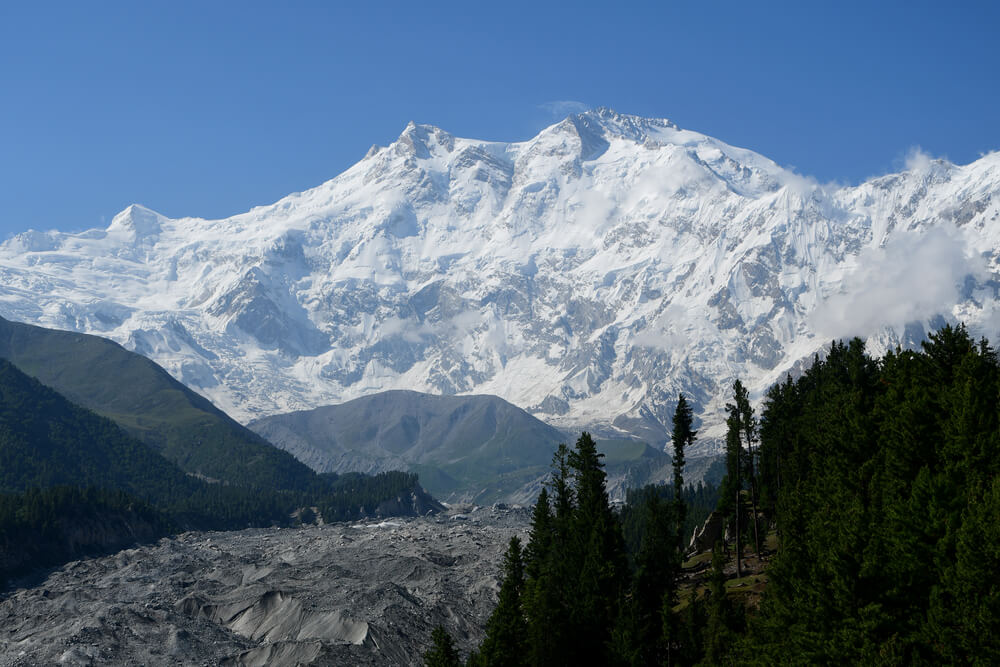
Nanga Parbat is also known as Diamer or Deo Mir. In the local Balti language, Nanga Parbat is known as the “face of snow.”
Who was the First Person to Climb Nanga Parbat?
Every year, many people try to climb this mountain; some are lucky enough to summit the peak, and others come back after failure. But unfortunately, many people have also lost their lives in deadly expeditions to Nanga Parbat.
The first person to climb it was British Alpine climber Albert F.Mummery. In 1895, he led an expedition to the Nanga Parbat with two Gurkha companions. They tried to climb the Diamer Face, the most challenging side of the mountain, but alas, they could not succeed, and all three of them died while trying to explore the Rakhiot face.
Later, in the 1930s, at least 30 German climbers lost their lives on different expeditions to the killer mountain. It became an exciting mountain to summit because K2 at that time was unreachable, and even accessing the base camp was a task.
The first successful ascent to Nanga Parbat was completed in 1953 by Austrian climber Hermann Buhl.
How Many Faces Does Nanga Parbat Have?
Nanga Parbat isn’t a single peak; instead, it’s a series of peaks and ridges nearly 20 km long and culminates in an ice crest of about 8,126 meters.
It has three prominent faces: the Diamir face, the Rupal face, and the Raikot face.
The Diamir face is the most popular one as it is the easiest to climb. It is also considered the safest face with the Kinshofer route. In February 2016, it was successfully climbed by a team consisting of Ali Sadpara, Simone Moro, and Alex Txikon.
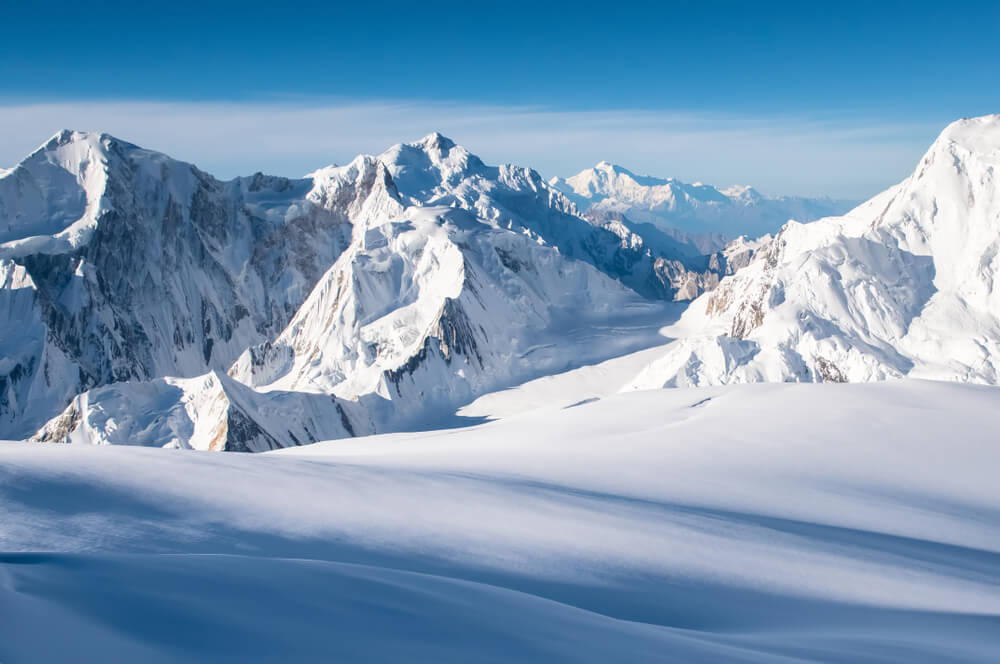
On the other hand, the Rupal face is the largest in the world as it extends over 4 kilometers above the base camp. It measures about 5,000 meters.
Finally, the Raikot face, or North face, plunges over 7,000 meters from the summit to the Indus, forming one of the world’s deepest gorges. Rakhiot face was the one climbed in 1953 by the German-Austrian expedition led by Herman Buhl. He made the final ascent in a 41-hour solo ordeal without oxygen.
So, Nanga Parbat has three prominent faces, Rupal, Diamir, and Raikot, each with specific challenges.
What to Pack for Nanga Parbat Pakistan?
When packing for your Nanga Parbat expedition, pack plenty of warm clothing. The mountain is located in a region that experiences freezing temperatures, so you must be prepared for the elements.
The key to having a great time on the Nanga Parbat expedition is planning, organizing, and packing before you go. You’ll not only prepare for the trip by loading the necessary equipment, but you’ll also have to take training and physical preparation seriously to make your journey successful. Here’s a list of essential things you need to pack for Nanga Parbat, Pakistan:
–Warm Clothing
- Thermal wear
- Trekking T-shirt
- Fleece Jacket
- Full-sleeve T-shirt
- Mid-Weight Trek Top
- Down Jacket
–Headwear
- Sun Cap
- Fleece Cap
- Headlamp
- Glacier Glasses
- Sun Glasses
- Neck Gaiter
- Head Buff
–Bag packs
- Day Pack (30-40 Ltr)
- Rucksack (45-55 Ltr)
- Waterproof Stuff Sack
- Duffle Bag 2 pc
–Personal Stuff
- Down Sleeping Bag (-20 for basecamp)
- Down Suit
- Down Sleeping Bag (-20 to -40 for summit camp)
- Thermarest Matress Cell Foam
- Thermarest Mattress Inflatable
- Trekking Pole
–Lower Body Wear
- Thermal Wears
- Heavy Weight Trek Pants
- Gore-Tex Pants
- Down Pants
- Windproof Pants
–Technical Stuff
- Helmet
- Harness
- Ice Axe
- Crampons
- Lock Carabiner
- Plain Carabiner
- Jumar
- ATC Device
–Other Stuff
- Antibiotics and Other Medicines
- Snacks and Drinks
- Toiletries
- Moisturizers
That’s only a raw list of what you’ll need to pack for the expedition; you might need to adjust according to your specific trip. Make sure to talk to your tour guide or operator for a more comprehensive packing list.
Basecamps of Nanga Parbat
Three primary basecamps are used when climbing or trekking Nanga Parbat: Rakhiot Basecamp, Diamir Basecamp, and Herrligkoffer Basecamp.
Rakhiot Basecamp
Rakhiot base camp is on the mountain’s Northside and is quite close to fairy meadows. You’ll be hiking toward the Rakhiot base camp from Fairy Meadows via Beyal camp, one of the most famous treks in Pakistan.
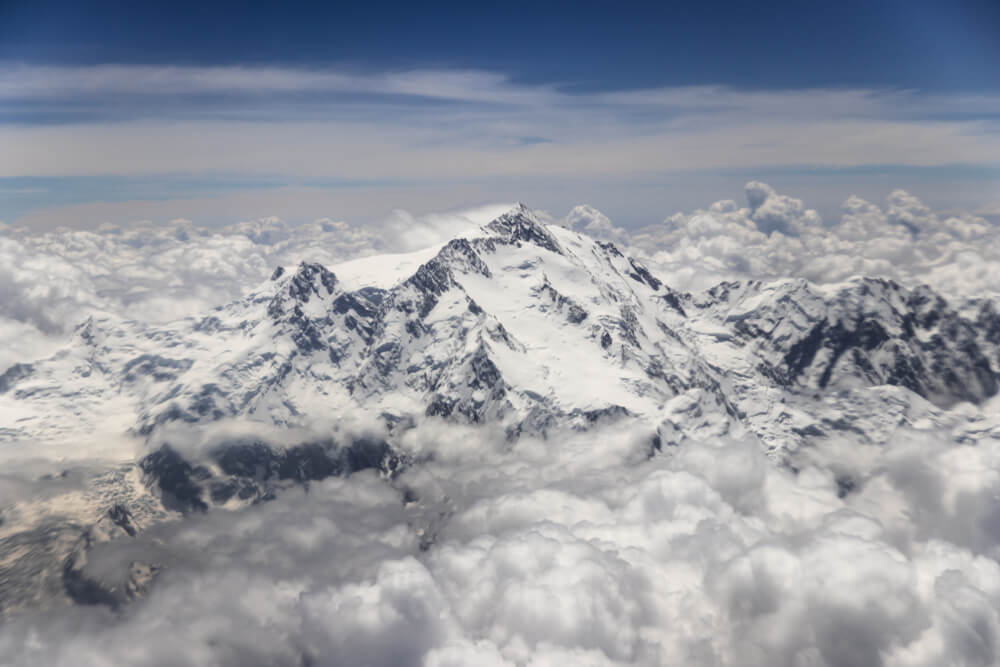
While traveling towards this base camp, you can enjoy the stunning views of the Rakhiot glacier, Fairy Meadows pine forests, and Nanga Parbat.
Diamir Base Camp
Contrary to the Rakhiot face, often visited, the Diamir face is quite a rough, long, and raw trek. You’ll have to trek for three successive days to get to the southwestern face of the mountain, from where you can directly see the main summit, but this trek takes work!
Diamir base camp is famous for its rich history of climbing expeditions over more than 100 years.
For eight days, you can experience the beautiful wilderness and mesmerizing views at this base camp.
Herrligkoffer Base Camp
Herrligkoffer basecamp, also known as Rupal face basecamp, is 5-6 hours from Rupal valley (Astore). It’s on the south side. From this base camp, many successful climbs to the summit of Nanga Parbat have been made.
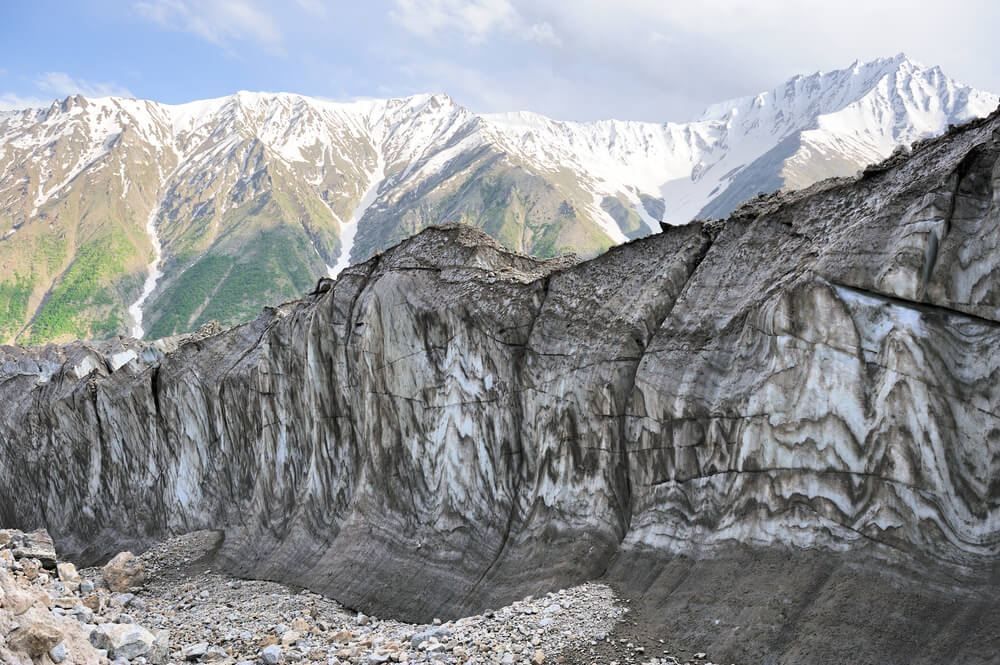
You can get a close view of it from here. After that, you can either return from base camp or have another option to continue towards the Mazino pass, the highest point of this trek.
Top Attractions During Route to Nanga Parbat Basecamps
While you’re moving towards the Nanga Parbat Basecamp, you’ll come across some stunning attractions you won’t forget for your whole life. So let’s take a quick look at it!
Stunning View of the Himalayas
One of the most stunning views that you’ll come across is the view of the Himalayas. You can see some of the world’s tallest mountains, like K2 and Nanga Parbat. The view is simply breathtaking.
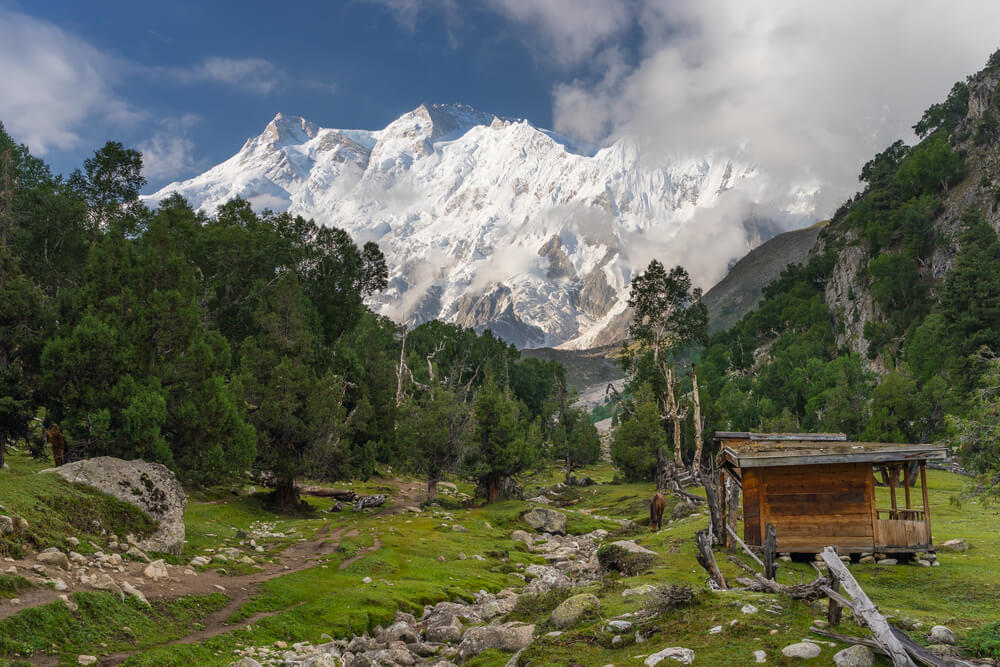
The Mesmerizing Fairy Meadows
Another attraction you’ll encounter during your journey is the mesmerizing Fairy Meadows. It is a lush green meadow that is surrounded by tall trees. The field looks like something out of a fairytale, and it is worth a visit.
Eye-Catching Views of Valleys and Lakes
During your trek, you’ll also see some stunning valleys and lakes. The valleys are blanketed with lush green vegetation, and the lakes mesmerize. You’ll want to take a few snapshots of these eye-catching views.
Jeep Ride – An Adventure in Itself
One of the journey’s highlights is the jeep ride to Nanga Parbat. The ride is quite bumpy, but it is an adventure in itself. You’ll see fantastic scenery along the way, and you might spot some wildlife.
When to Climb Nanga Parbat?
The best time to climb Nanga Parbat is from June to September. That is when the weather is most stable, and there is less chance of avalanches.
If you plan to explore beyond these months, you’ll face problematic snow at high altitudes. Winters are too extreme to even think about climbing it, and most basecamps are inaccessible during this time.
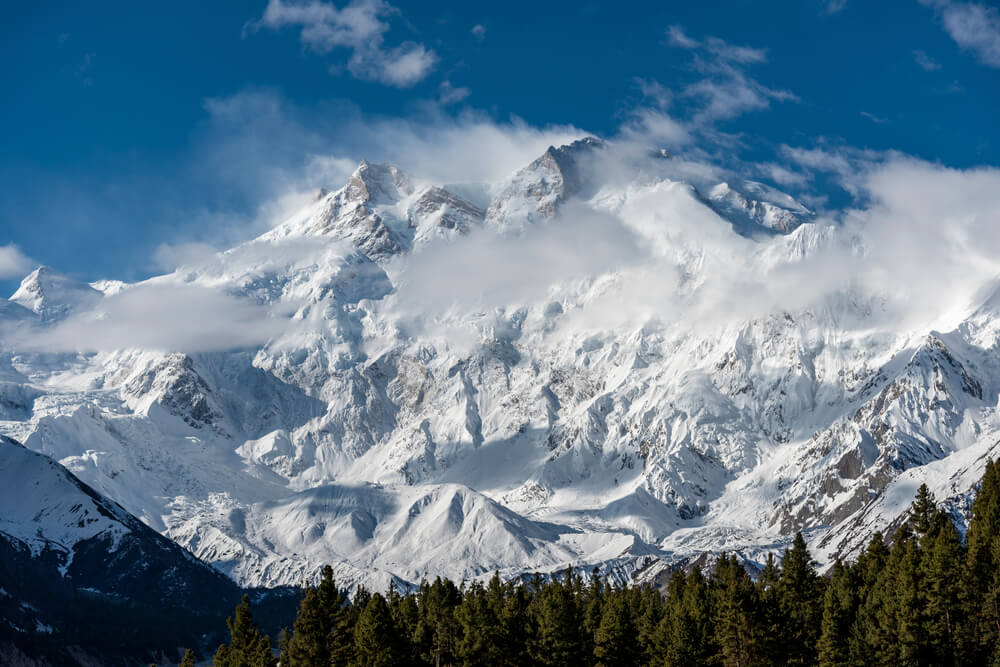
The snow begins melting in late April, but climbing is still unsafe as avalanches are higher.
Therefore, the best months for an ascent are June, July, August, and September.
Hurdles in Summiting Nanga Parbat?
The biggest hurdle in the Nanga Parbat summit is the weather. The mountain is very volatile, and the weather can change quickly. That can make conditions on the hill very treacherous.
Another big hurdle is the altitude. It is Pakistan’s ninth-highest mountain in the world, and summit attempts often involve spending extended periods at high altitudes. That can put a lot of strain on the body and lead to altitude sickness.
Recently, more challenges have been added; the credit goes to climate change. Moreover, rockfall and heat-related issues, a growing threat in Pakistan, are adding to the summiteers’ woes.
Finally, the mountain itself is very challenging. The routes to the summit are long and complex, and there are many technical sections. That can make climbing Nanga Parbat an arduous task. So, it’s advised to attempt this climb only if you’re a professional mountaineer with significant experience.
Why is it Known as Killer Mountain?
The ‘killer mountain’ moniker is well deserved, as Nanga Parbat has claimed many lives over the years. However, it’s one of the most dangerous mountains to climb, and experienced climbers should only attempt it with proper preparation.
The main reason why Nanga Parbat is so dangerous is its unpredictable weather. The mountain is located in the Himalayas, which means it’s subject to monsoon season. That can make conditions on the hill very difficult and lead to avalanches and other hazards.
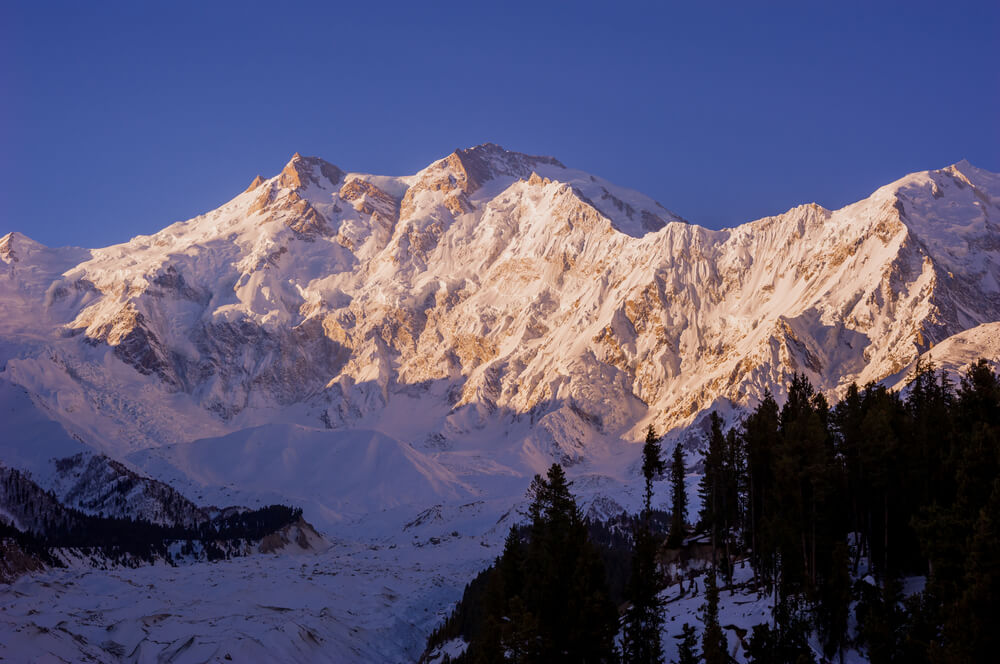
Because of its dangers, Nanga Parbat has claimed the lives of many climbers over the years. As a result, it’s been nicknamed “Killer Mountain” due to the high number of fatalities on its slopes.
Despite its dangers, Nanga Parbat is still a popular destination for climbers. Every year, hundreds of people attempt to summit the mountain. While only some are successful, the challenge and the view make it a goal for many.
How Many Deaths Have Occurred on Nanga Parbat?
Nanga Parbat has been nicknamed “Killer Mountain” due to the high number of fatalities on its slopes. Over the years, many climbers have died while attempting to summit the mountain.
In total, there have been over 64 deaths on Nanga Parbat in 287 attempts, making it the world’s third most dangerous mountain to climb. Some bodies have recovered, while others are still missing in those cold temperatures and harsh conditions.
A large number of climbers were killed in avalanches on the mountain. So the list of deadly events in the history of Nanga Parbat climbing is quite long.
Famous “Nanga Parbat” Movie
Nanga Parbat Pakistan has been in the limelight for centuries, be it because of its beauty or the many lives it has claimed. As a result, the mountain has been the subject of many books, documentaries, and movies.
The most recent movie on Nanga Parbat is “Nanga Parbat,” released in 2010. The film is based on the events during the 1970 Nanga Parbat expedition of the Messner brother. The movie was directed beautifully by Joseph Vilsmaier.
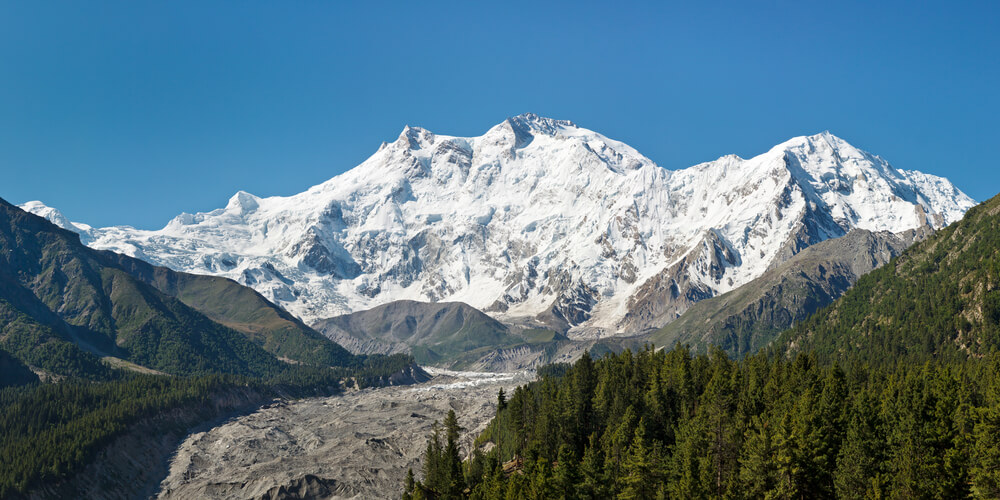
It shows how tragic the mountaineering expedition of the Messner brothers was to one of the enormous mountains in the world.
The movie stars Florian Stetter as Reinhold Messner, Anreas Tobias as Gunther Messner. The movie was not just a biopic on the life of Reinhold Messner but also an account of what took place during the expedition. Watch the film to catch some facts and figures about the Nanga Parbat expedition.
Islamabad to Nanga Parbat Distance
Nanga Parbat is located in Northern Pakistan, about 220 kilometers from Islamabad. However, Islamabad is Pakistan’s capital, making it a convenient location to start your journey.
Traveling by air will take almost 3 hours and 20 minutes to reach Islamabad airport, including transfers.
There are several ways to travel from Islamabad to Nanga Parbat. The most common and thrilling way is by bus or jeep. Bus services are available from the bus terminals in Islamabad. The journey takes more time than flying, but the adventure is worth it.
A jeep is also a great option, but it is a bit expensive compared to the bus. You can rent a jeep from any car rental company in Islamabad.
Nanga Parbat Location
Nanga Parbat is located in the Kashmir region of Pakistan. The exact location of the peak is in Western Himalayas, almost 27 kilometers west-southwest of Astor. It is the westernmost peak of the Himalayas and lies in Pakistani-Administered Kashmir.
The mountain is in isolation from other peaks as it lies in an arid and remote region.
Frequently Asked Questions
Is Nanga Parbat in Karakoram?
Nanga Parbat is the second-highest mountain in Pakistan. Nanga Parbat is not a part of the Karakoram range, as it is the westernmost peak of the mighty Himalayas. It is separate from the Karakorum, and the thing that separates it is the Indus River.
How much does it cost to climb Nanga Parbat?
The costs of climbing Nanga Parbat, one of the eight-thousanders peaks of Pakistan, vary depending on your route and the services you use. Generally, climbing it from the Diamir side is cheaper than the Rupal side. The cost of Basecamp services for the Nanga Parbat expedition can be nearly 12,000 USD, and the price for full-board service is 31,000 USD. The expedition lies between 43 to 46 days, and the cost covers the entire trip.
The cost of permits to climb Nanga Parbat is not included in this. It is also possible to climb without using paid services, but this is only recommended if you are an experienced mountaineer.
How long is the Nanga Parbat base camp trek?
The Nanga Parbat base camp trek is no less than an adventure amidst the Himalayan region of Pakistan. The base camp trek here typically takes about 10-13 days. That includes the time it takes to hike to the base camp and back and any time spent acclimatizing at the base camp.
There is also an option to take a helicopter from Islamabad to the base camp, which can save time but will increase the expedition cost.
It is known as the “Killer Mountain” and is one of the world’s tallest and most dangerous peaks. The mountain has claimed many lives over the years, but that has not stopped hikers and mountaineers from attempting to summit it.
